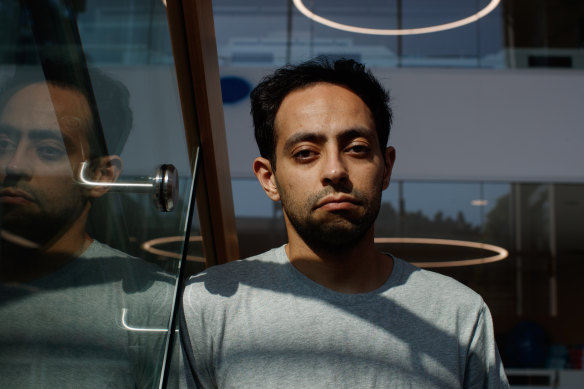This was published 10 months ago
Revealed: The number of students each university is set to lose under crackdown
NSW universities are set to lose nearly 13,000 international students under the government’s migration crackdown, leaving UNSW facing the largest decline of any institution in Australia as it braces for a major economic shortfall.
The international student caps, which have forced universities to tighten their budgets and led to hiring freezes and reneged job offers, have disproportionately affected NSW universities, which could lose more than half a billion in revenue.
The hit to Victoria – whose public universities have been granted the biggest cumulative cap by the federal government – will be less acute, with the state to lose about 4000 students.
Education Minister Jason Clare last month gave public universities the proposed individual cap on new international student enrolments to which they would be limited in 2025, under government reforms aimed at curbing migration which still need to pass federal parliament.
Analysis of new government data by this masthead reveals that NSW public universities will be allocated 42,400 international students under the proposed legislation, down on the 55,234 enrolled this year.
The University of NSW will be limited to 9500 students next year, more than 45 per cent less than the 17,359 new enrolments it had this year. Sydney University will be limited to 11,900, a 31 per cent reduction on the 17,247 new students on campus this year.
Based on the average revenue per international student of $41,117, that could leave UNSW with a $323 million shortfall, and Sydney University a $220 million reduction in funding.
In Victoria, Melbourne University, RMIT and Monash University will each be facing a reduction of more than 2000 new enrolments under the proposed caps.
Meanwhile, Queensland public universities will have a net gain in international students under the caps, with their cumulative limit 2000 enrolments higher than those recorded this year.
UNSW, which did not answer specific questions on the issue, reiterated its previous statement that it was concerned about the detrimental impact the caps will have on the experience of all students – international and domestic alike.
The university is highly affected by the caps because it had a huge surge in international students this year and the caps have been determined based on levels of growth between 2019 and 2023.
The University of Sydney, which had the second-largest cut to student numbers in the country, said there was still significant uncertainty around its cap for next year, and it has not been able to replicate the government’s indicative limit with its own data.
“Until we can work through those details we’re not in a position to make comparisons or confirm likely impacts,” she said.
“We appreciate this ongoing uncertainty could be disruptive and frustrating for some staff as we seek to clarify the likely impact of the proposed caps on our plans for 2025 and beyond.”
The spokeswoman said a small number of courses for semester 1 next year were already full but many remained open for applications.
Australian Catholic University was forced to halt international recruitment after reaching its limit of 1700 students for next year, a 50 per cent reduction on 2024 enrolments.
“This is deeply disappointing, but we wanted to provide certainty to international students applying to study at ACU while responding to the clear direction we have been given by the government,” vice chancellor Zlatko Skrbis said.
Sydney University casual genetics academic Fahad Ali is among the staff affected by hiring freezes due to the expected revenue loss from international student caps.
He had been a casual since 2019 and thought he had finally landed a sought-after permanent research position at the university after a competitive recruitment process.

Sydney University casual academic Fahad Ali.Credit: Nikki Short
After being told he was the preferred candidate, he was informed recruitment for the role was paused indefinitely.
“As a consequence I am back to casual work for the university, which does not pay enough to really cover rent and pay expenses,” he said.
“If universities are looking to cut costs, inevitably it will affect casual insecure workers more than anyone else.”
Ali said the future for academic careers appeared bleak and would result in universities hemorrhaging talent, and have grave consequences for Australian research and innovation.
Clare wrote to vice chancellors last week warning them that delays in passing the legislation to allow him to cap student numbers would result in controversial ministerial direction 107 remaining in place.
The direction, which aimed to slow down visa processing, prioritised metropolitan universities whose students had the least risk of visa rejections.
“The legislation that is currently before the parliament fixes this by providing certainty through giving each higher education provider a number of international students that can be enrolled and more evenly distributing those students through a better and fairer system,” Clare said.
Get the day’s breaking news, entertainment ideas and a long read to enjoy. Sign up to receive our Evening Edition newsletter.